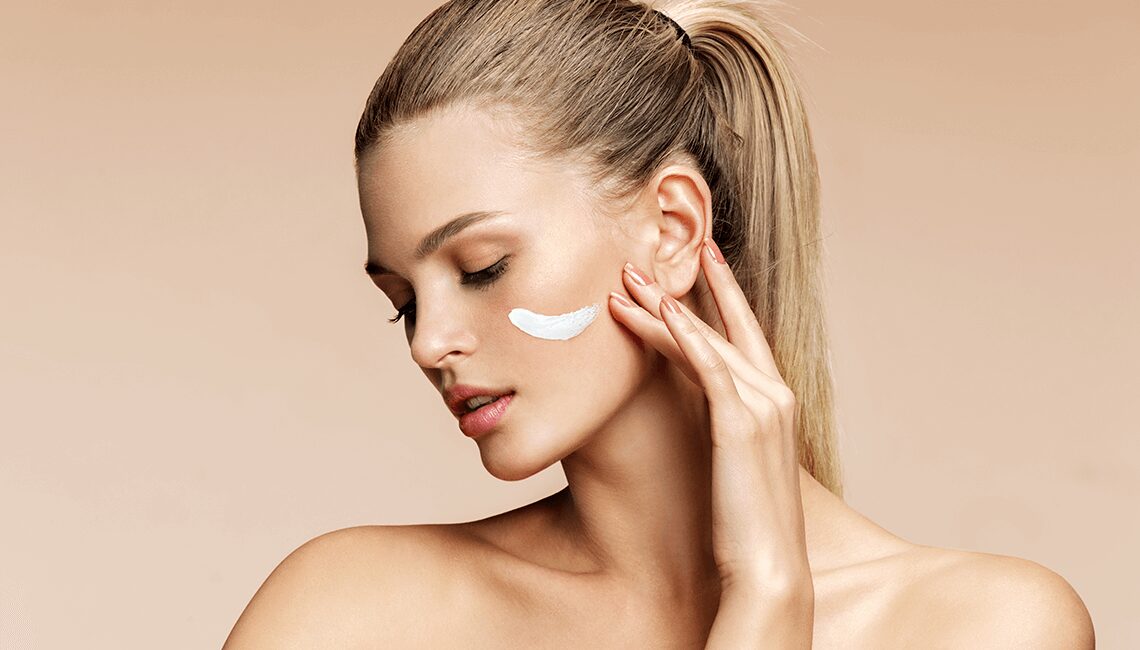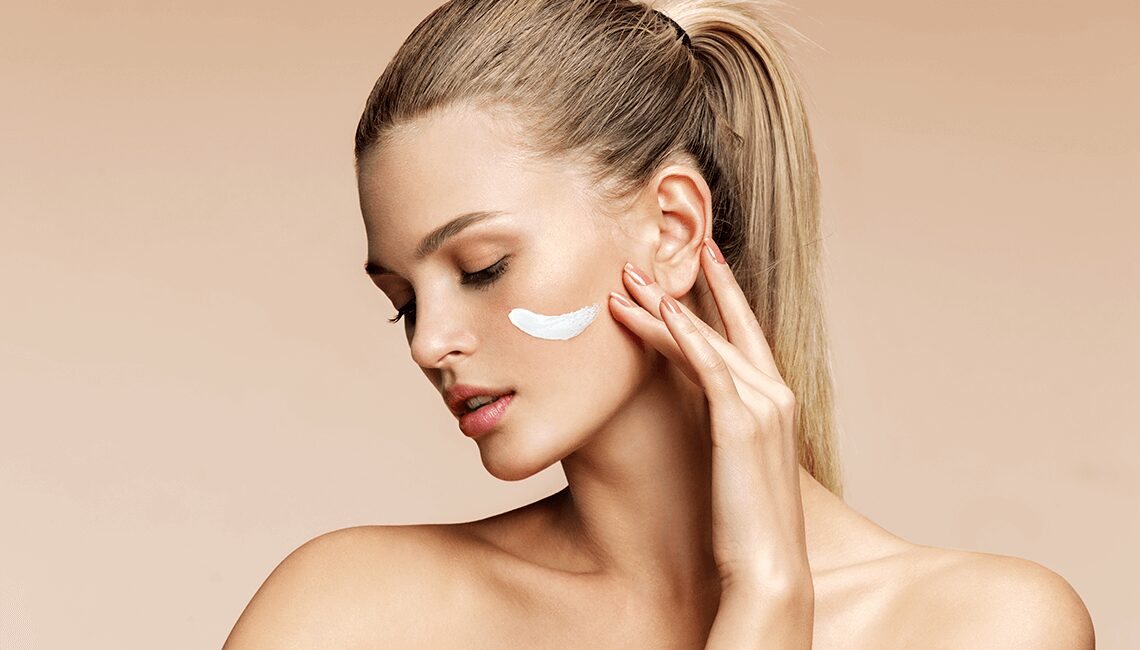For most women, our first makeup or skin care purchase is a rite of passage and a cherished mother-daughter event. The personal care and cosmetic industry is a huge cornucopia of products claiming to make us younger, prettier, smell nice, and allow us to have good hygiene. According to cosmetic and personal care industry statistics, women use six or more cosmetic products and an average of thirteen personal care products on a daily basis! Would you be surprised to find out that many of the product you use everyday (lipstick, eye shadow, perfume, body wash, shampoo) contain toxic chemicals? Would you be more surprised to learn that there are virtually no regulations regarding the ingredients and the labeling of these products?
More than Skin Deep
Toxins found in cosmetics and personal care products may possibly pose a greater health risk than those found in food or elsewhere for a number of reasons. Your skin absorbs whatever products you use topically easily and rapidly. These chemicals enter directly into your blood stream, bypassing your liver (the “detoxifier” for your body). This potentially makes these products more dangerous than if you ate them! Combine that with the fact that some products are applied multiple times a day, like lipstick. This results in prolonged, repeated exposure. Some of these products are known carcinogens and toxic substances that are harmful to women as well as their unborn children.
According to the American Cancer Society’s 2021 statistics, people in the US have a 1 in 3 chance of developing cancer in their lifetime. 75-80% of those cases are a result of non-inherited factors, meaning they are a due to lifestyle, environment, eating habits, exercise habits, etc. The culmination of these facts and statistics tell us that a closer look into cosmetic and personal care ingredients is necessary. With lifestyles leaning toward health, fitness, and healthy organic food, it seems counterintuitive to apply products to our skin that contain chemicals, toxins, and poisons. Below are details on some of these substances- where they are found, what they do, and what to look for on the label.
Kiss Me Deadly
Rumors of lead in lipstick have long been a popular urban legend. That is until the FDA began testing lead levels in lipstick. An FDA study conducted in 2012 revealed that the amount of lead found in lipstick is more widespread than previously reported. In this study, 400 types of lipstick were tested and the lead levels were 7.9 ppm (parts per million). The acceptable lead level in food is about 0.1 ppm. This level is twice the level reported previously.
The average woman who wears lipstick consumes 4-6 pounds per year from licking their lips or eating while wearing lipstick. Considering how many times women apply lipstick per day, lead exposure is a reality. Once absorbed by the body, lead mimics iron, calcium, and zinc in the body and takes these mineral’s place in the various cells and processes in our bodies, interfering with nervous system and red blood cell production, among others. Lead exposure is particularly harmful to pregnant women, as lead can reach the fetus and breast milk, interfering with brain development.
At this time, lead is not considered an ingredient, but rather a contaminant of the product, meaning it does not have to be listed as an ingredient on the label. In 2016, the FDA published an industry guidance suggesting a 10 ppm lead limit recommendation for lip products and other externally applied cosmetics. But, if you use more than one product containing lead, it is easy to see how this may pose an issue.
What You Can Do to Get the Lead Out:
- Use only certified organic lipstick and lip products
- Check the safety of lipsticks in the Skin Deep database, found on the Environmental Working Group website, www.ewg.org.
Faulty Fragrance
Fragrance is a listed ingredient in almost every cosmetic and personal care product. “Fragrance” is a generic catch-all term that can represent up to 4000 synthetic chemicals; 900 of which have been identified by the National Institute of Occupational Safety and Health as toxic. Fragrance formulas are considered trade secrets in the cosmetic and personal care product industry, meaning that manufacturers do not have to disclose the exact concentrations or ingredients. Additionally, there are no truth in advertising regulations, meaning that the label “fragrance free”, “hypoallergenic”, and “unscented” may contain fragrance compounds. Some of the harmful hidden chemicals found in fragrances include allergens and sensitizers, phthalates, and neurotoxins.
Fragrance ingredients are one of the top five allergens in North America and Europe. Once someone has a reaction to an allergen (the response usually affecting the skin, eyes, or respiratory system), they remain sensitized to that product for the rest of their lives. Each subsequent exposure can trigger contact dermatitis, asthma attacks, or in some severe cases, anaphylactic shock. Most allergic reactions are not product reactions, but the chemicals and toxins in the fragrance compounds.
Phthalates are a group of chemicals that have been linked to hormone disruption in the body. Phthalate exposure has been shown to increase the risk of breast and prostate cancer, affect sperm counts in males and cause decreased fertility in females, and predispose us to metabolic problems such as obesity and thyroid disease.
Common phthalates in personal care products include dibutyl phthalate (DEP) and diethylhexyl phthalate (DEHP), although they usually are hidden under the fragrance ingredient umbrella.
Taking the Stink Out of Personal Care Products:
- Choose products with no added fragrance
- Use fragrance product less often. For example, do not use scented body wash, shampoo, and perfume; pick one favorite and make the other products fragrance free
- Search for products without fragrances using the Skin Deep database developed by the Environmental Working Group at www.ewg.org/skindeep
Coming Clean on Shampoo, Soap, and Body Wash
Many of the soaps, shampoos, and body washes available (even those formulated for children) contain carcinogens and contaminants. Many of these products contain dioxane and formaldehyde, both well-documented carcinogens.
Dioxane is a by-product of chemicals such as sodium laurel sulfate (SLS), sodium laureth sulfate (SLES), and ammonium laureth sulfate (ALS), or any other chemical with “eth”, “laureth”, or “oleth” in their name. These chemicals are popular ingredients in personal care products that form lather. Dioxane is a known mammary (breast) carcinogen. Research on these chemicals has also shown links to organ toxicity, developmental/reproductive toxicity, hormone disruption, and nerve toxicity.
Formaldehyde is a contaminant by-product of chemicals such as DMDM hydantoin, bronopol, imidiazolidinyl urea, and diazolidinyl urea. Formaldehyde is a carcinogen that is linked to breast cancer and abnormal growth of reproductive organs, as well as allergic skin reactions.
Detoxifying Shampoo, Soap, and Body Wash:
- Avoid shampoo and other products with any form of “eth” or “olidinyl” in the ingredients
- Look for products labeled sulfate free
- Purchase organic or green products
A New Greener You
The chemicals and toxins discussed are present in minute quantities in most products. Even so, they have the potential to cause serious health problems due to the way they are used in small quantities over long time periods. The other concern is the effect these products have on children, whose organ and immune systems are not fully developed so that they cannot filter out toxins as easily as adults. Also of concern is the extent of transfer of these toxins to a developing fetus or breast milk.
There is light at the end of the tunnel. The good news is that due to media attention and special interest groups such as the Environmental Working Group and Susan G. Komen for the Cure, many cosmetic and personal care product manufacturers are making an effort to reduce their toxic load and also develop products that do not contain these chemicals. The FDA is also considering setting limits on some of the carcinogens and contaminants that are found in these products.
The best plan is to avoid products containing these toxins altogether. As mentioned earlier, the Skin Deep database is a useful resource for researching toxin levels in products as well as www.safecosmetics.org. Information on toxins in general can be found on both the FDA and EPA websites. The following are some action steps that will lead to a greener you:
- Look for certified organic products bearing the green USDA organic seal
- Choose products that are fragrance free or use essential oils for scent.
- Read the label before you buy. Take note of the order of ingredients listed- the first few listed are the chemicals in highest concentration
- In terms of evaluating ingredients, chances are if you cannot pronounce the ingredient, it probably doesn’t belong in or on your body.
- Evaluate your morning/evening routine. Do you really need to use all those products?
- Buy products that are packaged in glass bottle and jars rather than plastic.
- “Don’t put anything on your skin that you wouldn’t eat” Horst Rechelbacher, former Aveda CEO
Adopting a few small changes will go far towards improving your overall health.












